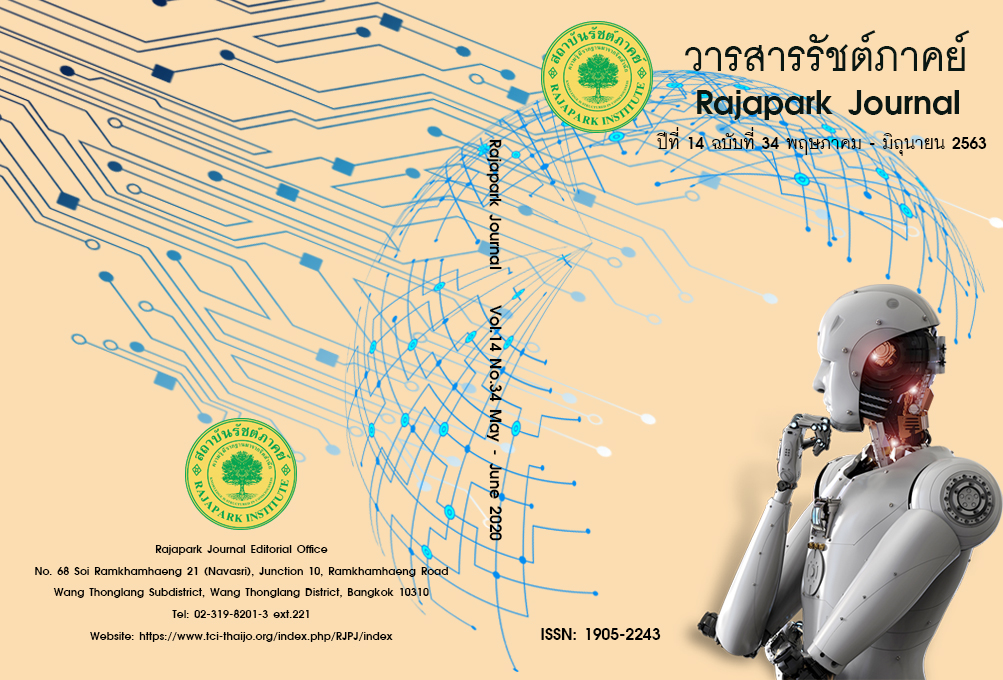ประสิทธิภาพของแบบจำลองกำหนดอัตราแลกเปลี่ยนเงินบาทต่อค่าเงินในอาเซียน
Main Article Content
บทคัดย่อ
การศึกษาประสิทธิภาพของแบบจำลองกำหนดอัตราแลกเปลี่ยนเงินบาทต่อค่าเงินในอาเซียน มีวัตถุประสงค์ เพื่อศึกษาประสิทธิภาพของแบบจำลอง (1) Flexible Price (2) Dornbusch Sticky Price และ (3) Real Interest Rate Differential ซึ่งตัวแปรที่นำมาใช้ คือ (1) ปริมาณเงินโดยเปรียบเทียบ (2) รายได้ประชาชาติโดยเปรียบเทียบ (3) อัตราเงินเฟ้อโดยเปรียบเทียบ และ (4) ส่วนต่างอัตราดอกเบี้ย โดยนำตัวแปรทั้งหมด มาทดสอบความนิ่ง (Unit Root) และนำมาวิเคราะห์สมการเชิงถดถอย (Ordinary Least Square: OLS) จากนั้นนำมาเปรียบเทียบความสามารถในการพยากรณ์ จากค่าเฉลี่ยความคลาดเคลื่อนยกกำลังสองต่ำสุด (Root Mean Squares Error: RMES) ผลการศึกษาพบว่า แบบจำลอง Flexible Price มีประสิทธิภาพในการพยากรณ์การกำหนดอัตราแลกเปลี่ยน ระหว่างค่าเงินบาทกับเงินสิงคโปร์ดอลลาร์ สำหรับแบบจำลอง Real Interest Rate Differential มีประสิทธิภาพในการพยากรณ์การกำหนดอัตราแลกเปลี่ยน ระหว่างเงินบาทกับเงินบรูไนดอลลาร์ เงินบาทกับเงินริงกิต เงินบาทกับเงินเปโซ เงินบาทกับเงินรูเปียห์ เงินบาทกับเงินด่ง เงินบาทกับเงินกีบ เงินบาทกับเงินจ๊าด และเงินบาทกับเงินเรียล
Article Details
ทัศนะและความคิดเห็นที่ปรากฏในวารสาร ถือเป็นความรับผิดชอบของผู้เขียนบทความนั้น และไม่ถือเป็นทัศนะและความรับผิดชอบของกองบรรณาธิการ
เอกสารอ้างอิง
Asia Regional Integration Center Asian Develop Bank Central. (2019a). Consumer Price Index.
Retrieved April 8, 2019, from https://aric.adb.org/indicators/
Asia Regional Integration Center Asian Develop Bank Central. (2019b). Policy Rate. Retrieved April
, 2019, from https://aric.adb.org/indicators/
Bank of Thailand. (2018). Average Exchange Rate of Commercial Banks in Bangkok. Retrieved
December 25, 2018, from https://www.bot.or.th/thai/_layouts/application/exchangerate/ exchangerateago.aspx
Cahyono, D. (2008). Determinants of equilibtium real exchange rate and its misalignment in
Indonesia (post crisis era). Retrieved June 1, 2019, from https://thesis.eur.nl/pub /6713/Dedi%20Cahyono%20ECD.pdf
Government Public Relation Department ASEAN Information Center. (2018). Thailand and ASEAN.
Retrieved February 25, 2018, from http://www.aseanthai.net/download/thai-asean2.pdf
Homkhachon, K. (2013). International Finance Economics. Bangkok: Ramkhamhaeng
University.
Kaenjad, C. (2013). Exchange Rate Analysis of Thailand after Using Floating Exchange Rate
System. Master of Economics Thesis. Khon Kaen University.
Madouni, M. (2014). Real exchange rate misalignment in Algeria. Retrieved June 1, 2019, from
https://ijac.org.uk/images/frontImages/gallery/Vol._3_No._5/3.pdf
Office of the National Economics and Social Development Council. (2019). GDP of Thailand.
Retrieved April 8, 2019, from https://www.nesdb.go.th
Satchawitwisarn, N. (2015). Assessment of Exchange Rate in the AEC in Comparison to the
Chinese Yuan. Master of Science Thesis. King Mongkut's University of Technology Thonburi.
The World Bank. (2019a). GDP of ASEAN. Retrieved April 8, 2019, from http://api.worldbank.org
The World Bank. (2019b). Broad Money of ASEAN. Retrieved April 8, 2019, from


